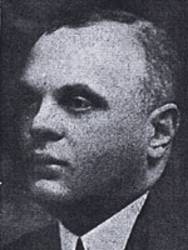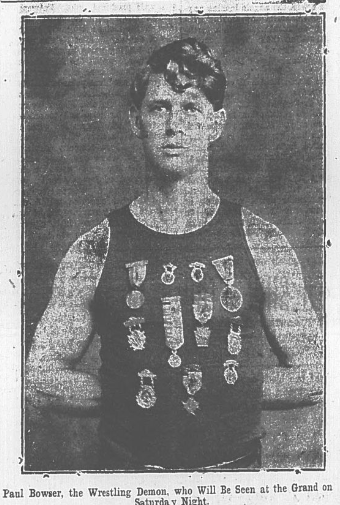促進摔跤
職業摔跤從合法比賽演變成體育表演有兩個原因. 我已經寫了很多關於第一個原因的文章. 同樣熟練的摔跤手之間的合法比賽通常很長, 無所事事的無聊事務. 這些比賽讓球迷望而卻步,並阻止了職業摔跤作為觀眾運動的爆發.
我沒有寫太多關於第二個原因的文章. 1910年代末和1920年代初,美國大城市或美國地區強大的推動者的出現. 一旦政治聯繫的企業主接管了這項運動, 企業主希望控制這項運動的各個方面,包括舉辦世界冠軍的摔跤手.

傑克·庫利(Jack Curley)的照片 1910 (公共領域)
在這項運動的前幾十年, 當地體育男子經常通過確保他們想看到的比賽場所來擔任發起人. 這些支持者經常在活動中洗個澡,因為人群數百人. 觀眾沒有產生足夠的收入來支付摔跤手或支付場地的租金.
埃德溫·比比(Edwin Bibby vs). 喬·阿克頓(Joe Acton)比賽 1882 是這種促銷安排的一個例子. 紐約當地的運動員託了錢租用麥迪遜廣場花園. 比比在三百個觀眾面前捍衛了美國重量級摔跤冠軍. 付費人群並沒有接近為場地支付的費用要少得多,償還體育運動的人 $350 獲勝者的錢包. 支持者遭受了巨大的財務損失.
之間 1890 和1910年代, 摔跤手的經理還擔任過標準支持者和大型比賽場所的準宣傳員. 在 1910, 弗蘭克·哥特(Frank Goth)的經理, 埃米爾·克蘭克, 與芝加哥的帝國俱樂部合作,為俱樂部籌集了與Stanislaus Zbyszko的Gotch冠軍爭奪場所的場所.
Gotch要求六十%的門收據. 帝國俱樂部的佔百分之三十五,離開了Zbyszko,只有5%的大門.
In the early 1910s, 當地商人開始在大城市和城鎮開放促銷活動. 傑里. 牆壁可能是一個城鎮的第一個普通發起人. 在劉易斯在肯塔基時代期間,他管理了埃德·勒克勒·劉易斯. 牆壁給劉易斯以他的名字命名為他的名字, 羅伯特·弗里德里希(Robert Friedrich), 或弗雷德里克.

保羅·鮑澤(Paul Bowser)的照片 1914. 他在波士頓促進了職業摔跤數十年. (公共領域)
牆壁推廣了列剋星敦, Kentucky, 他的家鄉和路易斯維爾, Kentucky, between 1913 和 1915. 劉易斯經常主持這些卡.
當劉易斯和新經理一起前往紐約, 比利·桑多, 牆壁退出,促進摔跤和拳擊. 之後我找不到他的提及 1915.
傑克·庫利(Jack Curley)將自己設置為第一個大城市促進者, 當庫利在紐約市開業時 1915. 庫利與薩姆·拉赫曼(Sam Rachmann)合作,在拉赫曼(Rachmann)的秋季版本 1915 New York International Wrestling Tournament.
原來, 柯利晉升了拳擊和摔跤. 德州里卡德(Tex Rickard)從拳擊中擠出了柯利(Curley), 庫利專注於專業摔跤. 利用他對該國最大潛在市場的政治聯繫和控制, 庫利很快控制了世界冠軍.
By the early 1920s, 保羅·鮑澤(Paul Bowser)在波士頓建立了晉升. Tom Packs Conloted ST. 路易. 其他區域發起人在美國和加拿大的大型中型城市開設了促銷活動. 這些發起人想控制專業摔跤的一切, 因此,他們有效地結束了合法競賽. 當地促銷出現後唯一的合法競賽是雙重交叉或達成共識以解決促銷差異的競賽. 合法的專業摔跤以美國結束.
You can leave a comment or ask a question about this or any post on my Facebook頁面.
Sources: The New York Times, 八月 8, 1882, P. 2, 明星論壇報 (明尼亞波利斯, Minnesota), 二月 15, 1910, P. 10 和 列剋星敦先驅, 七月 1, 1913, P. 9

